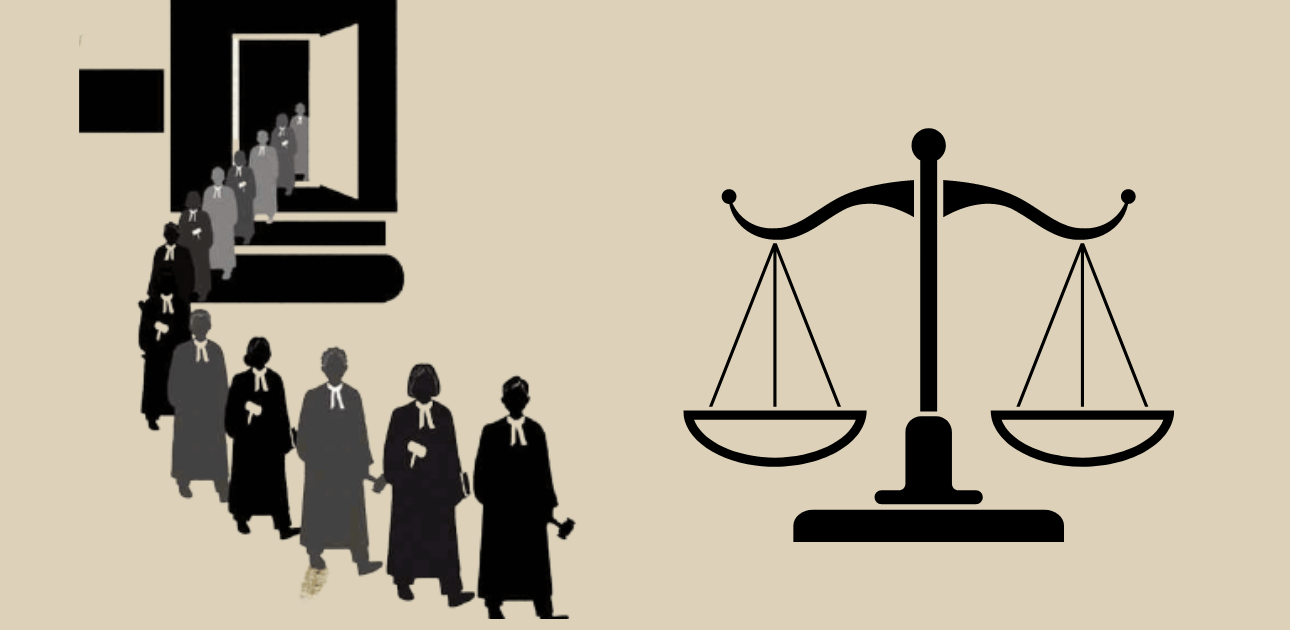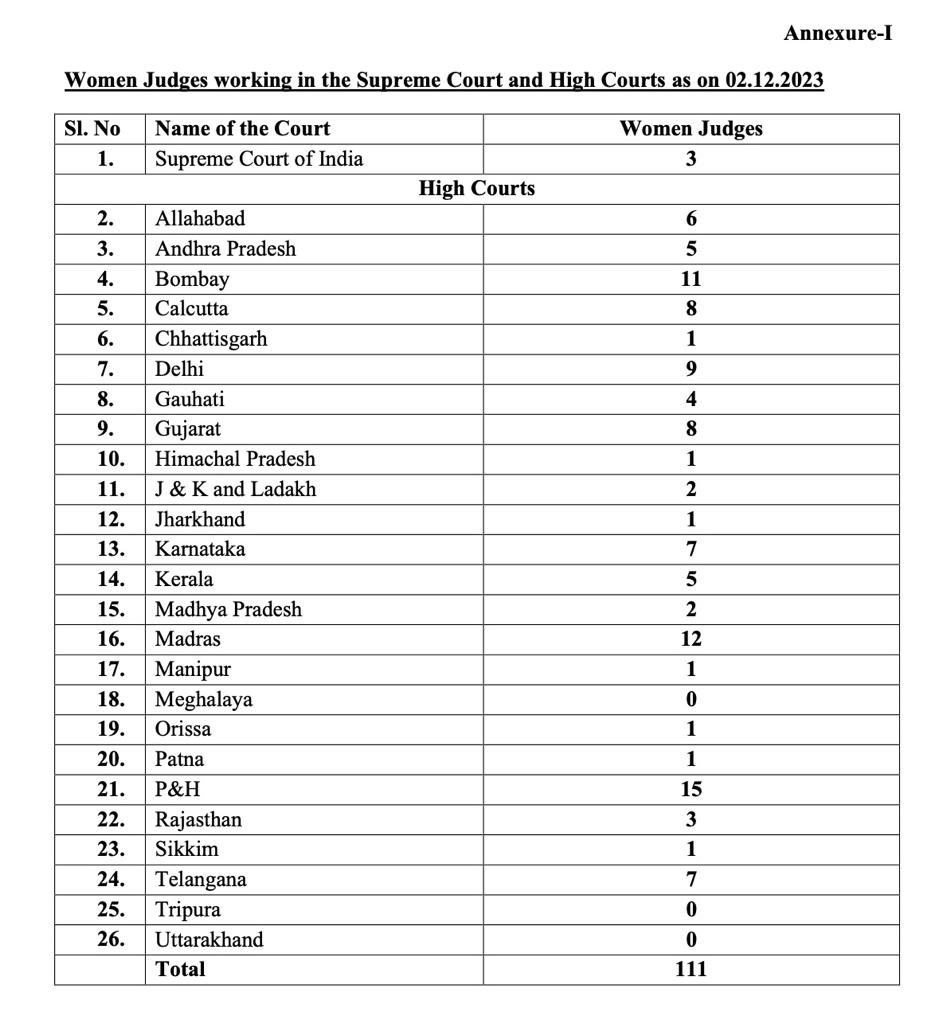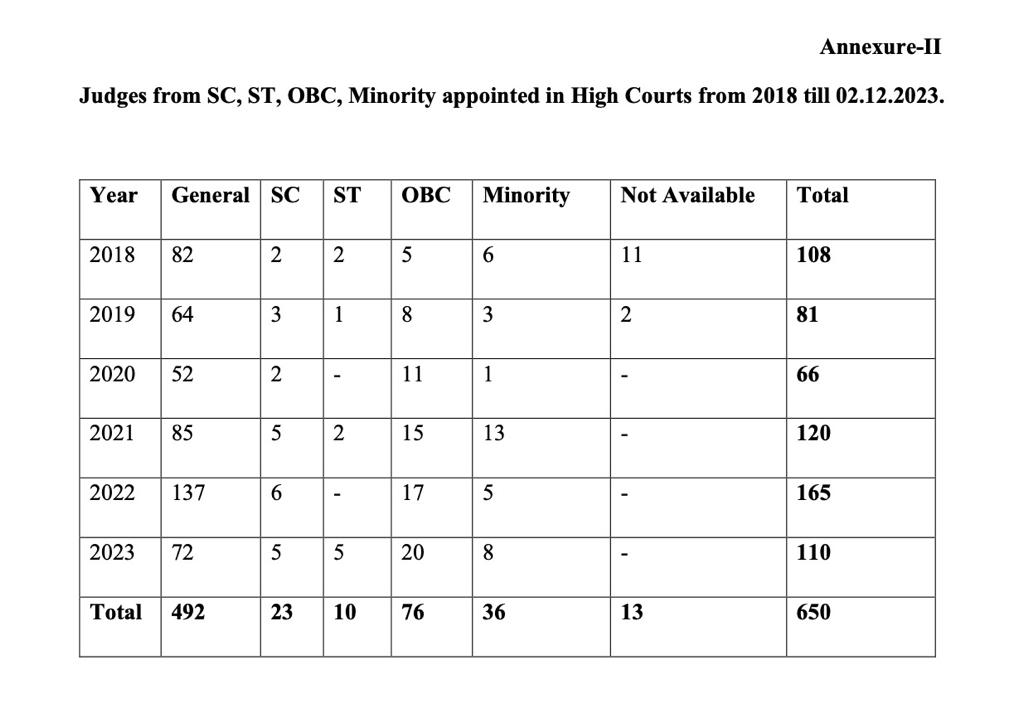On December 7, during the ongoing winter parliamentary session, politician and journalist Dr. John Brittas (CPIM) raised questions regarding the appointment of women judges as well as judges hailing from the Scheduled Caste (SC), Scheduled Tribes (ST), Other Backward Classes (OBC) in the Supreme Court and High Courts. Further, Brittas inquired on the subject of inclusion of the various minority groups in the judiciary and the diverse judges present in the Supreme Court and High Courts.
Arjun Ram Meghwal, who is currently serving as the Union Minister of Law and Justice, apprised the Rajya Sabha with detailed data on the representation of women and SC/ST/OBC groups in the judgeship of the constitutional courts of India. As per the data provided, at present there were a total of three women justices in the Supreme Court, namely Justice BV Nagarthana, Justice Hima Kohli and Justice Bela M Trivedi. As the current working strength of the Supreme Court stands at 34, the representation of women in the Supreme Court comes down to a mere 8.8%. It is essential to note here during the term of the current Chief Justice of India, DY Chandrachud, no woman has been elevated to the Supreme Court.
Furthermore, the data provides that a total of 111 women judges are present in the various High Courts of India. A total of 790 judges comprise all the High Court’s bringing the percentage of women representation to 14%. The data of the union government shows that the maximum number of women judges are present in the Punjab and Haryana High Court a total of 15, followed by the Madras High Court with 12 women judges and Bombay High Court with 11 women judges. It is crucial to note that there is no representation of women judges in the High Courts of Meghalaya, Tripura and Uttarakhand. It is crucial to note that except for Gujarat High Court, there is no woman Chief Justice in any of the high courts in India. Chief Justice Sunita Aggarwal had been appointed as the CJ on July 19.
Based on the data, it can be deduced that in higher judiciary, a total of 114 women judges are present out of the total 814 judges, forming 13.8 per cent.
A look at the data regarding judges from the SC, ST and the OBC groups shows that between the years 2018 and 2023, a total of 650 judges were appointed and a majority of them were from the general category. As can be deduced from the data, a total of 492 judges belonging to the general category were appointed, which is equivalent to 75.69% of the current strength. This dominance of the general category appointments was in stark contrast to the appointments that took place from the marginalised categories. In period of 6 years, 23 judges (3.54%) from the SC community, 10 judges (1.54%) were from the ST community and 76 judges (11.7%) were the OBCs. The data further shows that a total of 36 judges (5.54%) were minority. Essentially, these groups make up a total of about 22.24% of the judiciary.
It is crucial to note that during the tenure of CJI D.Y. Chandrachud, who took his office in November 2022, there has been an increase in the diverse representation. From having zero representation of the ST community in the High Courts, the number today stands at 5 judges. Additionally, in 2022, there were there 17 OBC judges and 5 judges from the minority, which has now risen to 20 judges 8 judges respectively. It is also pertinent to highlight that while the Supreme Court is working at its sanctioned strength of 34 judges, the 25 high courts have a cumulative shortage of 324 judges, where 790 judges are working as against the sanctioned strength of 1,114.
The necessity for diversity in the judiciary has been highlighted especially by the former Chief Justice N.V. Ramana. He had emphasised upon the importance of diversity in reflecting the nation’s social and geographical diversities. Current CJI Chandrachud had also stressed that diversity in the bench promotes diverse opinions, enhances efficiency, and creates a judiciary that people perceive as their own. The speeches and statements from both the current and former justice underscore the importance of inclusivity, representing various castes, religions, genders, and marginalized communities within the judiciary.
As can be opined, to create a more diverse and representative judiciary, reforms in the appointment process are essential. This would be possible by redefining ‘merit’ to encompass diverse experiences and backgrounds. This highlights the need to harmonise merit with diversity and to identify and promote meritorious candidates from marginalized communities.
The complete answer can be accessed here:
Related:
Infant mortality rate: UP records highest rate for SC at 57.8, Chhattisgarh at 41.6 for ST
MOE: Alarming dropout rates among SC, ST, and OBC students in premium institutes of India since 2018
Displacement due to Airport Expansions? Union Response in Rajya Sabha Leaves Questions Unanswered
Union government data shows increasing employment, decreasing unemployment rate since 2018
Union data shows increasing beneficiaries of scholarships for OBCs in the past 5 years
Over 5 years, 1033 serious coal accidents reported, 717 took place in Telangana alone



